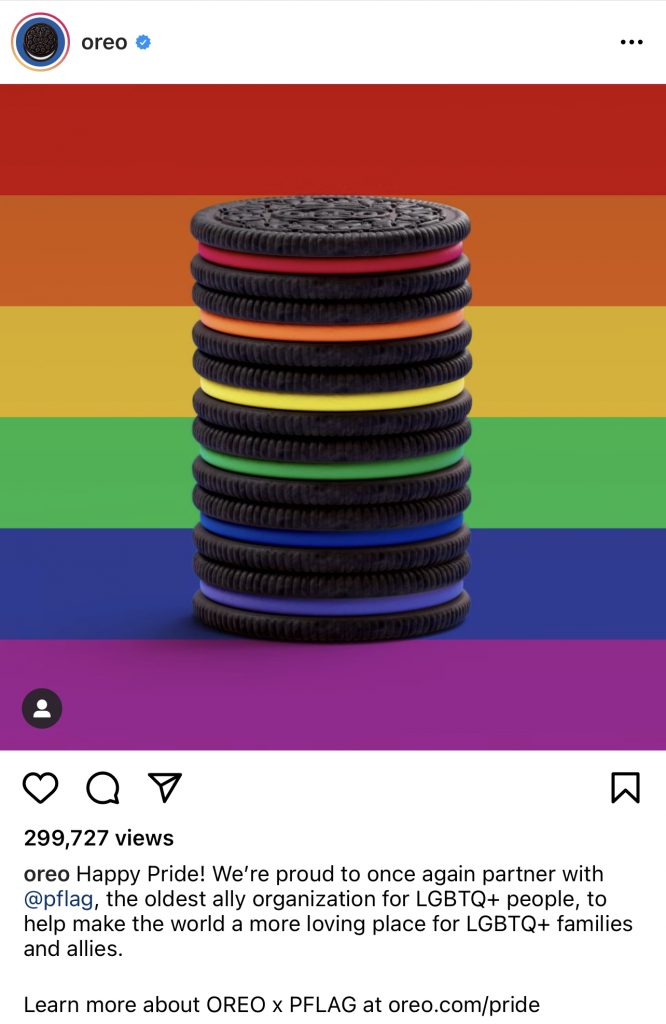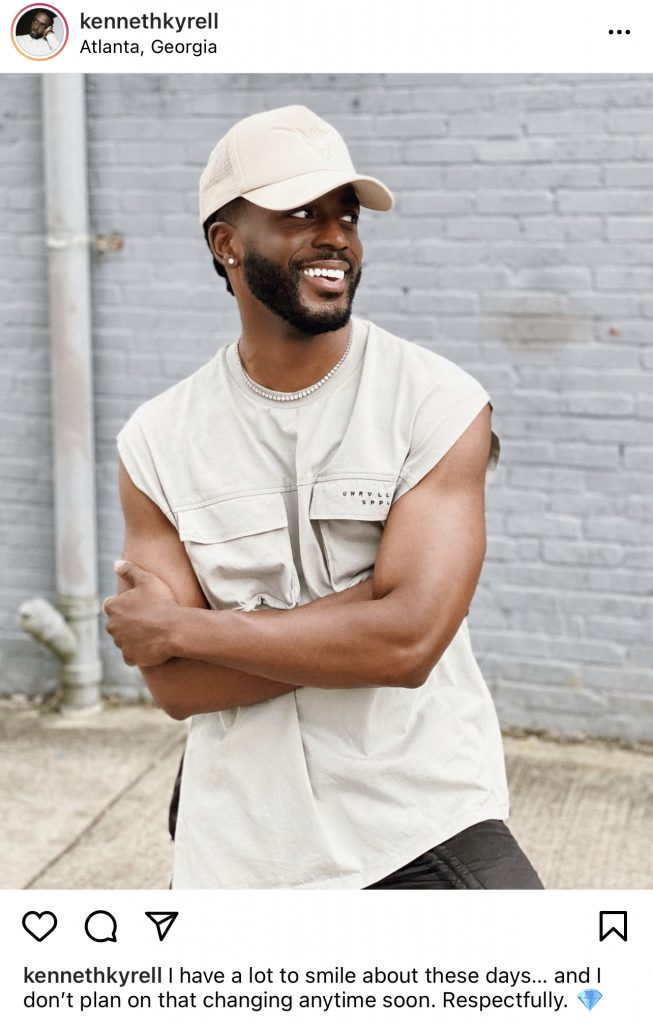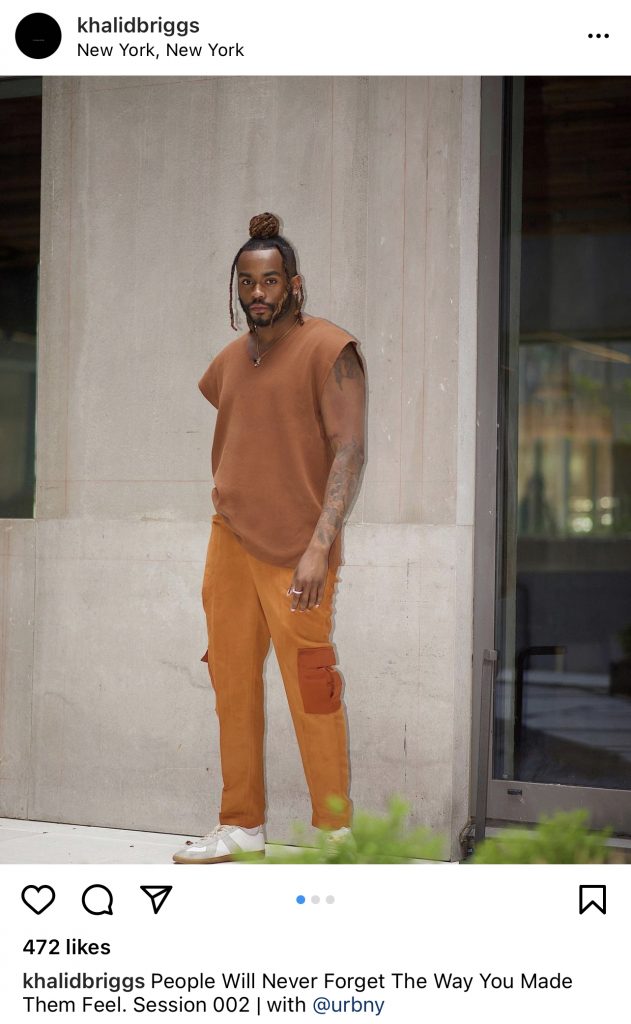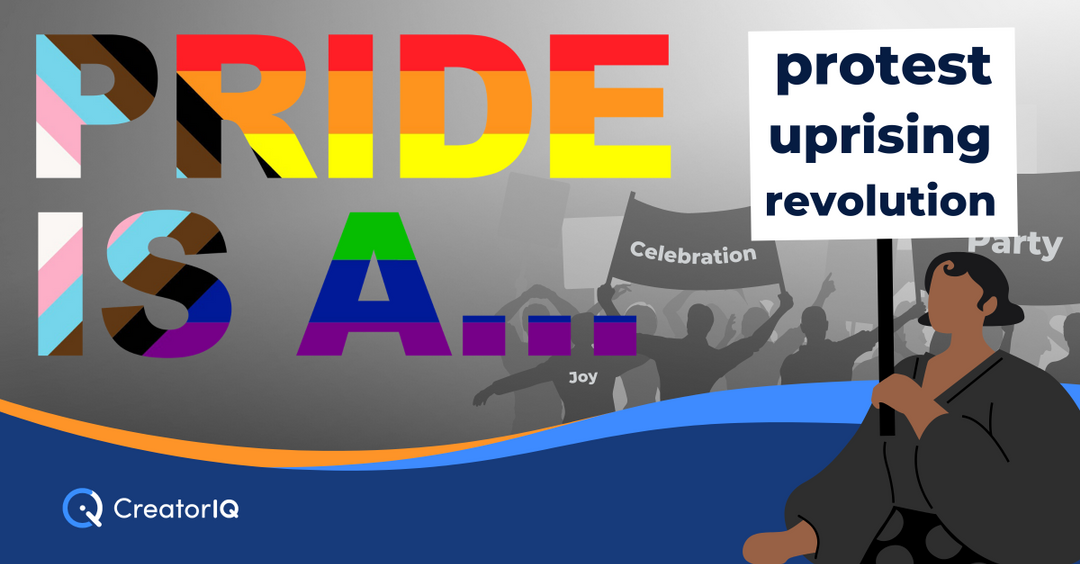In June of 1969, the fight for LGBTQIA+ equality began a new era following the Stonewall Riots in New York City. The riots began when members of the Community - led by trans heroes of color - took a physical stand against the institutions and authorities that oppressed them, sending a clear message to the police, government, and wider society: “ENOUGH IS ENOUGH”. Through their act of civil defiance, the bravery of a few bar patrons and their friends inspired a movement that has led us to the more queer-friendly world in which those with privilege enjoy progress today; one in which Pride parades and marches are abundant, joyous celebrations, politicians campaign in queer spaces (“Gay rights!”), and during Pride month the very halls of the White House bask in the glow of rainbow light.
While Pride events have become celebrations of the vibrant LGBTQIA+ Community in the US and around the world, it is important to remember that the original spirit of Pride is one of protest - one that fuels the continued fight for justice and equity for all. This can’t be understated as brands need to know that many in the LGBTQIA+ Community feel unwelcome at Pride events and feel Pride serves mainly privileged gay white men - that Pride has become too commercial with brands taking shallow, performative actions that leave out marginalized Community members such as the QPOC Community. With this in mind, and to celebrate as well as protest during Pride Month, we wanted to look inward toward our own industry, to see whether the LGBTQIA+ community is represented within influencer marketing - taking a look at how brands are working with LGBTQIA+ creators and analyzing trends as they appear. Is the industry headed in the right direction when it comes to inclusion and representation?
Pride 2020 - The Data
It’s relatively common for sponsored influencer content pertaining to a specific topic to spike around a holiday or observance related to that topic (check out our latest blog post about sustainability to see what happened with related sponsored content on Earth Day last year). However, just because it is common doesn’t mean that it is a good thing. These performative spikes can indicate that brands are capitalizing on singular moments to raise awareness of causes and issues rather than championing them throughout the year, and consistent engagement with those topics year-round is the best way to drive long-term, meaningful change. Simply put, updating your company logo with rainbows in June is one way to demonstrate allyship, but highlighting queer heroes and culture will come across as far more authentic. From the AIDS crisis to the Pulse massacre to the continued violence against trans women of color - there are many stories to tell year-round. But it really boils down to hiring marginalized LGBTQIA+ Community creators & influencers year-round to help tell these and other stories - as that’s when a company steps into advocacy & activism, with intersectional DEI at the core of influencer marketing strategies.
Using CreatorIQ’s advanced data science capabilities, we analyzed a sample of more than 500,000 sponsored influencer posts from January 2020 to date. As expected based on years prior, we did see a slight performative spike in sponsored content containing LGBTQIA+ keywords in June 2020. Posts with LGBTQIA+ messaging went from comprising <1% of those total sponsored posts to >2%. The percentage of LGBTQIA+ influencers with which brands are working also saw a similar spike in June 2020.
However, we also observed a steady increase over time in the percentage of sponsored posts with LGBTQIA+ messaging year over year (0.57% in January 2020 vs. 0.80% in January 2021), with minimal fluctuation month to month. So, while some brands increased LGBTQIA+ content and influencer engagements in June 2020, those brands are working with LGBTQIA+ influencers throughout the year and at increasing rates. These numbers represented in this data remain consistent throughout the year when we break the content down by LGBTQIA+ Communities, such as the trans and QPOC Communities.
This suggests that brands are not just tapping LGBTQIA+ influencers for Pride content, but also for campaigns outside of Pride Month - which is promising news. In fact, CPG giant P&G and GLAAD, the world’s largest LGBTQIA+ media advocacy organization, recently announced The Visibility Project, a new campaign to drive and sustain LGBTQIA+ inclusion in ads and marketing and to leverage the power of these mediums to accelerate LGBTQ acceptance.
Great. Now, How Can We Do More? What’s the Call to Action?
The consistency of representation and steady increase over time in LGBTQIA+ related content is promising for the Community and good for brands because it shows influencer strategies are trending in the right direction - one of proportional representation - and that influencer marketing is a growing, core pillar for brand marketing DEI initiatives. However, the value of LGBTQIA+ inclusion in advertising goes far beyond intersectional DEI and can directly impact a company’s bottom line; and not just when it comes to queer audiences. Yes, the LGBTQIA+ community has enormous buying power, surpassing $1 trillion annually. However, the benefits of LGBTQIA+ representation in advertising are seen in the brand perception of women of all sexual orientations. In fact, 60% of millennial women are more likely to remember a brand with LGBTQIA+-friendly ads, and these consumers are also more likely to engage with them online.
Some brands understand the value of LGBTQIA+ representation in advertising and enjoy brand perception and market share benefits because of it. The brands that produced the greatest percentages of sponsored content pertaining to the LGBTQIA+ Community in 2020 included Listerine, Oreo, and Barefoot Wine, and they continue to set an example for allyship for other brands in 2021.

But, there is still work to be done to elevate LGBTQIA+ voices and to further increase representation in proportion with the population. As part of our research, we spoke with LGBTQIA+ creators to learn about their experience working with brands on sponsored campaigns. Here are a few ways that influencers recommend leveraging influencer marketing to support LGBTQIA+ voices this year and beyond:
Call to action: “Our lives extend beyond Pride month. There are so many brands that like to put rainbows on everything and highlight the LGBTQIA+ community during the month of June and fail to do so any other time. It comes off as performative and is really a slap in the face. Yes, June is pride month and a time to recognize the LGBTQIA+ community, but it's also important to keep that energy year long.” - Kenneth Kyrell (@kennethkyrell)

Call to action: “Allow creators to tell their own stories. Stop trying to craft copy points for us and use us as puppets for their predetermined message. I understand that you all may have KPI's to hit but choose creators who have proven to be sincere and honest with their copy and allow them to tell their followers why they're working with them.” - Khalid Briggs(@khalidbriggs)

Call to action: “Understand the many different types of people within the LGBTQIA+ community. We are not all the same and these brands need to understand that and the campaigns should reflect that. We do not all dress the same, we do not all talk the same, we don't all walk the same, etc. -- that's the beauty of it all. I wish more brands would showcase the DIVERSITY within the community.” - Kenneth Kyrell(@kennethkyrell)
Call to action: “not everyone wears their rainbow flag around their head. Please don’t force people to tell stories they aren't comfortable telling or expressing themselves to be or act in the way that people "assume how gay people act" not everyone is the same in the expression of their sexuality.” - Khalid Briggs (@khalidbriggs)
Keeping an Eye on Pride 2021
Even though LGBTQIA+ representation in influencer marketing appears to be growing, it will be worth watching how the numbers fluctuate for Pride 2021 as in-person events begin to return. If we observe a more notable performative spike (as we’ve seen in years prior to 2020), then it will be clear that there is still capacity for LGBTQIA+ stories to be told in advertising even more frequently throughout the year. The next step will then be to drive more proportional representation of LGBTQIA+ voices year-round by helping more brands to embrace influencer marketing as part of their DEI initiatives - continuing to sew queer stories into the fabric of culture, and guiding us ever closer to to the vision of society that those at Stonewall had in their hearts on the night of the riots.
In honor of this special month, and of trans heroes of color like Marsha P. Johnson, Sylvia Rivera, and leaders like Stormé DeLarverie whose shoulders we stand on today, the entire team at CreatorIQ wishes you a meaningful, reflective Pride. Whether you are celebrating, protesting, or both, we stand with you. To the 49 souls, we lost on this 5th anniversary at the Pulse massacre in Orlando, we share and say your names:
Stanley Almodovar III, 23 years old
Amanda L. Alvear, 25 years old
Oscar A. Aracena Montero, 26 years old
Rodolfo Ayala Ayala, 33 years old
Antonio Davon Brown, 29 years old
Darryl Roman Burt II, 29 years old
Angel Candelario-Padro, 28 years old
Juan Chavez Martinez, 25 years old
Luis Daniel Conde, 39 years old
Cory James Connell, 21 years old
Tevin Eugene Crosby, 25 years old
Deonka Deidra Drayton, 32 years old
Simón Adrian Carrillo Fernández, 31 years old
Leroy Valentin Fernandez, 25 years old
Mercedez Marisol Flores, 26 years old
Peter Ommy Gonzalez Cruz, 22 years old
Juan Ramon Guerrero, 22 years old
Paul Terrell Henry, 41 years old
Frank Hernandez, 27 years old
Miguel Angel Honorato, 30 years old
Javier Jorge Reyes, 40 years old
Jason Benjamin Josaphat, 19 years old
Eddie Jamoldroy Justice, 30 years old
Anthony Luis Laureano Disla, 25 years old
Christopher Andrew Leinonen, 32 years old
Alejandro Barrios Martinez, 21 years old
Brenda Marquez McCool, 49 years old
Gilberto R. Silva Menendez, 25 years old
Kimberly Jean Morris, 37 years old
Akyra Monet Murray, 18 years old
Luis Omar Ocasio Capo, 20 years old
Geraldo A. Ortiz Jimenez, 25 years old
Eric Ivan Ortiz-Rivera, 36 years old
Joel Rayon Paniagua, 32 years old
Jean Carlos Mendez Perez, 35 years old
Enrique L. Rios, Jr., 25 years old
Jean Carlos Nieves Rodríguez, 27 years old
Xavier Emmanuel Serrano-Rosado, 35 years old
Christopher Joseph Sanfeliz, 24 years old
Yilmary Rodríguez Solivan, 24 years old
Edward Sotomayor Jr., 34 years old
Shane Evan Tomlinson, 33 years old
Martin Benitez Torres, 33 years old
Jonathan A. Camuy Vega, 24 years old
Juan Pablo Rivera Velázquez, 37 years old
Luis Sergio Vielma, 22 years old
Franky Jimmy DeJesus Velázquez, 50 years old
Luis Daniel Wilson-Leon, 37 years old
Jerald Arthur Wright, 31 years old
